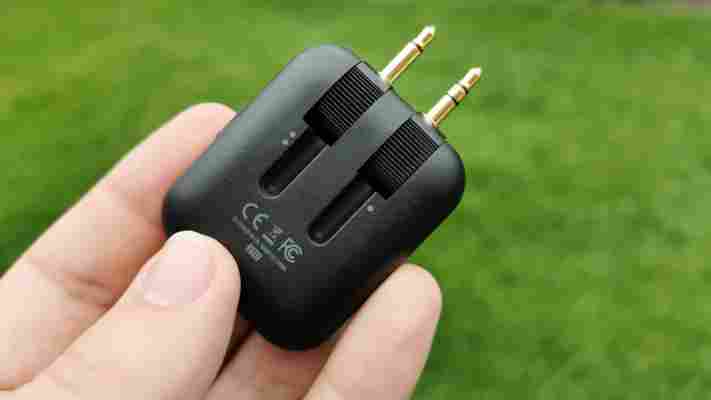
RHA’s latest product is a love-letter to the jetlagged, sweaty, exhausted travelers among us. The ones who regularly make the difficult choice between chicken and beef. The ones getting grilled at immigration, and having their gonads gently caressed by a TSA meathead while their laptop gets swabbed for explosives. There are never any explosives.

It’s also, I should say, a bit of a weird one. RHA is a well-known manufacturer of headphones, but its newest offering, the RHA Wireless Travel Adapter , is an accessory.
So, what is it? It’s a black cube of plastic that you can shove into the in-flight entertainment (IFE) system on your next exotic jaunt, allowing you to connect up to two pairs of Bluetooth headphones.
I travel a lot, and I’ve got a deep passion for travel tech, and how it can make an otherwise frustrating and uncomfortable experience bearable. When RHA mailed me their Wireless Travel Adapter, I eagerly tested it out — albeit at sea level.
Hand on with the RHA Wireless Travel Adaptor
When it comes to design, there’s not a lot to talk about. It’s a black square. There are no complicated widgets to mess with.
There are two 3.5mm prongs at the back, allowing you to connect to a standard 3.5mm headphone input, or one of those weird airline ones that you need an adaptor for. These are attached via a hinge that feels sturdy, and provides 180 degrees of rotation. This allows you to fold the device while in use, so it doesn’t stick out awkwardly.
Being able to reduce the profile of this is a huge plus. I travel extensively, and I’ve noticed that many airlines have the headphone jack concealed on the armrest of the seat. If that’s the case, you definitely don’t want to have a bit of equipment awkwardly sticking out.
A small LED light tells you the connection status of the device, as well as its battery level. The precise meanings of each can be found in the brief instruction manual that came with the device.
On the side of the device is a UBC-C input for charging. One of the things I really like about RHA as a company is that it uses the newest USB standard by default, unlike other manufacturers, who still cling desperately to MicroUSB, even though it’s 2019.
Like I said, there’s not a lot to talk about with respect to design. But how about performance?
I’m so glad you asked. Before we move on, I should point out that the RHA Travel Adapter arrived during one of those rare times where there’s a gap in my travel schedule. Consequently, I wasn’t able to test the device out on an airline’s IFE system. Instead, I plugged it into my laptop. It worked just fine.
Pairing was straightforward, and the sound quality was solid, with no drop-outs or distortion. It supports Qualcomm’s AptX codec, as well as the Bluetooth SIG’s SBC codec.
Battery life is solid, with 16 hours of endurance. While this is a little shorter than the duration of many ultra-long-haul flights, like Singapore Airway’s brutal 18.5-hour flight from Changi to Newark, you’re unlikely to be using it the whole time. You’ll probably stop using it when sleeping, or during the safety demonstration, or while eating.
Who is this for?
If you’ve got a pair of wireless headphones that don’t support wired connections, this’ll save you from having to carry (or buy) another pair on your next international trip.
It’s good. The battery life is excellent. The connection is reliable. It’s ergonomically quite nice, and feels robust to the touch. I have few complaints.
At £40 on Amazon UK , or $49 on Amazon US , it’s affordable, although I’d point out that it’s not the sole competitor in its class. The Taotronics Bluetooth Transmitter , for example, costs just £17, although it doesn’t support dual-pronged headphone sockets, and lacks the ergonomic finesse of RHA’s effort.
The RHA Wireless Travel Adaptor will only really be of use for those who take a lot of trips each year. I’m talking about the bleary-eyed road warriors among us. And although it lacks a mass appeal, it’s still a pretty nifty gadget, and one I intend to carry with me on all trips going forward.
This post includes affiliate links to products that you can buy online. If you purchase them through our links, we get a small cut of the revenue.